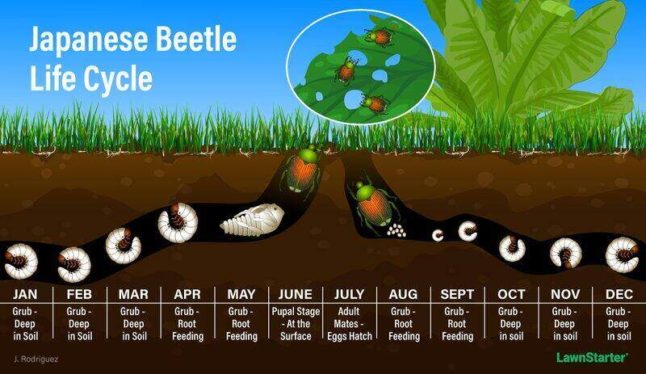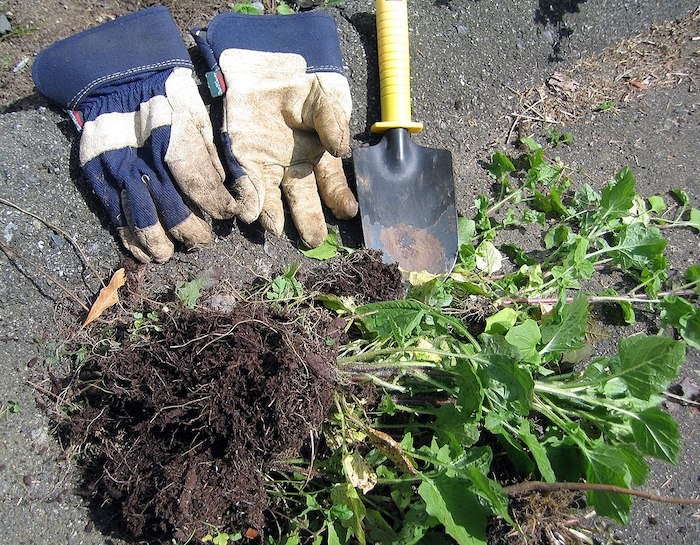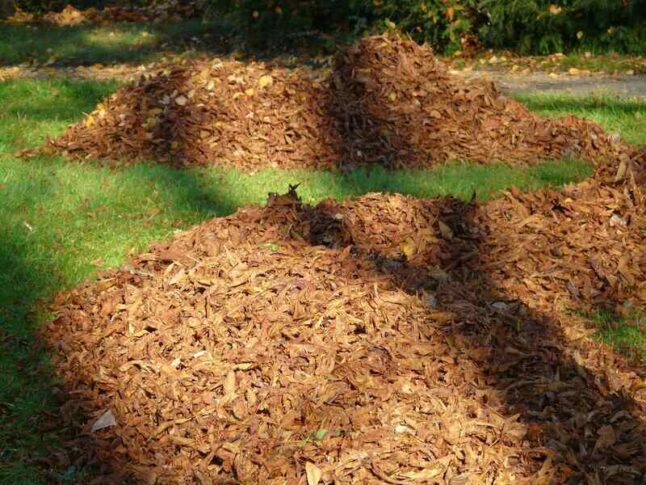
Summers in El Paso, TX are notoriously hot and can take a toll on your lawn. But fear not! With a few simple summer lawn care tips, you can keep your lawn looking lush and healthy all season long.
As temperatures soar and the sun beats down, giving your lawn the extra attention it needs is essential. Whether you’re a seasoned gardener or a novice green thumb, these tips will help you beat the heat and maintain a beautiful lawn in the heart of the Chihuahuan Desert. So, grab your hat and sunscreen, and let’s get to work!
- Raise the Mowing Height
- Water Efficiently
- Win the War Against Pests
- Careful With Weed Control
- Feed Your Lawn
- Mulch Your Way to a Healthy Lawn
- Prevent and Manage Lawn Diseases
- Dethatch in Early Summer
- Boost the Lawn’s Volume
1. Raise the Mowing Height

If you want to keep a healthy and green lawn during the summer months, adjusting your mowing height is essential. Raising the mowing height by just an inch can provide more shade to the soil, protecting it from the sun’s intense heat and reducing water evaporation.
This helps conserve water and encourages strong root growth, which is essential for a healthy lawn. Additionally, raising the mowing height can prevent the germination of weeds, like crabgrass, as they need sunlight to grow. So, to keep your lawn looking its best this summer, adjust your mowing height and let your grass grow a little taller.
Tip: Dull blades can tear and shred your grass, leaving it vulnerable to disease, pests, and losing moisture. Regularly sharpening your mower blades ensures that your lawn gets the clean, precise cut it needs to thrive.
2. Water Efficiently

Watering is one of the most critical aspects of lawn maintenance. During summer, when temperatures soar, it becomes even more central.
Water is essential for plant growth and many processes that keep your lawn healthy, such as photosynthesis and nutrient absorption. Without enough moisture, your lawn may become stressed, leading to various problems such as browning, wilting, and even death.
For efficient watering, follow these tips:
- Water in the early morning, before 8 a.m., so the grass has time to absorb it.
- Consider the weather conditions: Only water when there isn’t any rain in the forecast or if it hasn’t rained recently.
- Use an automated sprinkler system.
- Try the “cycle and soak” irrigation method.
- Avoid watering on windy days.
- Follow El Paso’s watering schedule.
3. Win the War Against Pests

Summers in the El Paso area are not only hot, but they also bring out unwanted guests in your lawn: pests. Pests like chiggers, ticks, and fire ants can bite or sting and potentially spread disease. In addition, other pests like grubs, chinch bugs, and armyworms can cause significant damage to your lawn by feeding on grass and plant roots.
Of all the pests that can invade your lawn, grubs are among the most common. These small, white, C-shaped larvae feed on the grass roots, causing them to wither and die. In addition, when grubs feed on the roots of your grass, they attract predators such as skunks and raccoons, who will dig up your lawn in search of a meal.
One of the best ways to win the war against pests is through integrated pest management, which is an approach to pest control that aims to minimize the use of pesticides and includes:
- Removing food and water sources so pests need to go elsewhere to feed.
- Habitat manipulation with exclusion barriers, so your lawn is not a suitable habitat for them.
- Proper lawn care, since pests prefer stressed lawns.
- Biological and mechanical control, using natural predators or traps.
- Monitoring for signs of infestation so it doesn’t have time to grow.
- Using less harmful pesticides, like beneficial nematodes and Bt
4. Careful With Weed Control

While weed control is essential to lawn care, it’s important to be careful about when and how you apply herbicides, especially during the hot summer months in El Paso.
Summer is the worst time to apply herbicides because high temperatures can make your grass more susceptible to damage. It is not recommended to use herbicides when temperatures exceed 85 degrees.
Instead of relying on post or pre-emergent herbicides, consider using other weed control methods, such as manually pulling weeds. You can also try using organic herbicides, which are generally less harmful to your lawn.
5. Feed Your Lawn

Fertilizing your lawn is one of the most important parts of lawn care, especially during the summer months in El Paso, when warm-season grasses like Bermuda and buffalograss are actively growing. These grass types thrive in the heat and can benefit from feedings from the right type of fertilizer.
It’s generally recommended to fertilize warm-season grasses from mid-spring through summer. However, it’s vital to be careful when fertilizing during the hottest month of the year, which is June. Excess fertilizer applied during summer heat can burn your lawn, leading to brown patches and other issues.
To avoid this problem, it’s best to use fertilizers formulated for summer feedings or to fertilize your lawn before the summer heat sets in — during spring lawn care.
Tip: According to the Texas A&M AgriLife Extension service, fertilizers that release nitrogen slowly are ideal for warm-season grass during the summer.
6. Mulch Your Way to a Healthy Lawn

You might have heard about adding mulch to flower beds, but have you heard about mulching your lawn? Mulching involves spreading a layer of organic material over the soil, such as wood chips and straw, but for lawns, leaves and grass clippings are recommended.
One of the primary benefits of mulching is that it helps to insulate your lawn against the intense heat of summer. This can help keep the soil cooler and prevent water loss, reducing the watering needed and preventing your grass from drying out. It can also help add valuable nutrients as the organic material decomposes.
The most common types of lawn mulch are grass clippings and shredded leaves, so think twice before bagging the clippings! You can also use a mulching mower to shred leaves into smaller pieces and make a thin layer on your lawn.
7. Prevent and Manage Lawn Diseases

Fungal diseases are expected during the hot summer months. They can quickly spread and cause significant damage to your lawn if left untreated. Common fungal diseases include:
- Powdery mildew
- Dollar spot
- Take-all root rot
- Gray leaf spot
- Brown patch
One of the most important steps you can take to prevent these lawn diseases is to avoid watering in the evening since it can create a moist environment that is ideal for the growth of fungi. Aerating and dethatching can also reduce the risk of fungal diseases.
Take action quickly if you notice signs of fungal disease in your lawn, such as discolored patches or spots. One effective method is to use fungicides designed to target and kill fungal spores. It’s vital to choose a product for the specific disease and to apply it according to the manufacturer’s instructions.
Warning: Mowing your lawn when it’s affected by a fungal disease can spread the disease, as the spores can attach to the lawnmower blades and be transported to other lawn parts. The same goes for grass clippings. So halt mowing and bag clippings until the disease is treated.
8. Dethatch in Early Summer

Thatch is the layer of living and dead grass, leaves, and other organic material that accumulates between the grass blades and the soil. While some thatch is normal and can actually be beneficial for your lawn, an excessive amount (more than half an inch) can prevent water and nutrients from reaching the roots as well as greater susceptibility to insects and disease
Dethatching involves removing the excess thatch from your lawn to promote healthy growth and prevent these issues. The best time to dethatch your lawn is late spring to early summer, so now is a good time if you didn’t get around to it in the spring. You can use the following:
- Manual dethatching rakes
- Power rakes
- Vertical mowers or verticutters
9. Boost the Lawn’s Volume

Overseeding is a simple yet effective way to improve the appearance of your lawn and promote healthy growth. This process involves spreading grass seeds over your lawn to fill in bare patches and thinning areas, which can help to give your grass more volume and a fuller look.
The best time to overseed warm-season grasses like Bermudagrass and buffalograss is from late spring through early summer, during their active growth period. However, if you happen to have a bluegrass hybrid or Texas bluegrass, wait until fall.
FAQ About Summer Lawn Care
Yes, but with some precautions. Fertilizing your lawn in early summer can help to promote healthy growth and help your grass endure heat stress. However, be careful not to burn the grass with excess fertilizer.
To avoid damaging your lawn, homeowners should use a fertilizer formulated for summer feedings and follow the manufacturer’s instructions carefully. Look for fertilizers that release nitrogen slowly to avoid over-fertilizing.
Efficient watering is the best way to keep grass alive during the hot summer months. One effective watering method to use during summer is the “Cycle and Soak” method, which involves breaking up your watering into several shorter cycles, with a break in between each cycle to prevent flooding and soil displacement:
• Run your irrigation system for 4 to 6 minutes in each zone.
• Wait between 30 minutes and one hour.
• Rerun the sprinklers.
• Repeat two times.
This can help to ensure that the water penetrates deep into the soil and reaches the roots of your grass instead of simply evaporating on the surface.
The general rule of thumb is to mow once a week. This can help keep your lawn neat and well-manicured and prevent the grass from becoming too long and unruly.
However, it’s important to note that the mowing frequency can depend on your type of grass. For example, if you have buffalograss, a common warm-season grass used in Texas, you can typically get away with mowing every three to four weeks.
Call in for Help
That’s a wrap on our top tips for summer lawn care in El Paso. With the right strategies, you can help your lawn stay healthy and vibrant all season long. But if you need a little extra help or advice, don’t hesitate to visit our El Paso lawn care page. Happy summer, and happy lawn care!
Main Photo Credit: Historic House at Fort Bliss / ForgottenColorado / Wikimedia Commons / CC BY-SA 4.0





